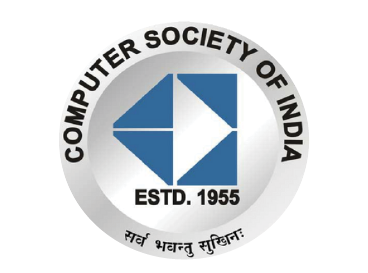



Faculty Mentor:
Ms. Geeta Sharma
Student Name:
Debapriya (MCA-II)
Darshana Rawat(MCA-II)
1. INTRODUCTION
As we all know today’s time is all about technology, how fast everything got evolved. It is widely believed that thousands of genes and their products (i.e., RNA and proteins) in a given living organism function in a complicated and orchestrated way that creates the mystery of life.
However, traditional methods in molecular biology generally work on a "one gene in one experiment" basis, which means that the throughput is very limited and the "whole picture" of gene function is hard to obtain. In the past few years, as a result of the Human Genome Project, there has been an explosion in the amount of information available about the DNA sequence of the human genome.
2. DNA CHIPS
A DNA chip is an orderly arrangement of rows and columns on a surface like a glass slide. Each of the spots on an array contains single-stranded DNA molecules that correspond to a single gene. An array can contain a few, or thousands, of genes.
DNA chips are miniaturized microsystems based on the ability of DNA to spontaneously find and bind its complementary sequence in a highly specific and reversible manner, known as hybridization.
Labeled DNA molecules in a sample are analyzed by DNA probes tethered at distinct sites on a solid support.
The composition of the DNA sample is then deduced by analyzing the signal generated by labels present at each probe site. DNA chip dimensions offer hybridization sites in the 50-200 micron range, producing arrays ranging from 100 to 1,000,000 different probes pecm2.

Figure:1
DNA CHIPS ALSO KNOWN AS MICRO ARRAYS.

Figure:2
3. IMPORTANTANCE OF DNA CHIPS
DNA chips are therefore useful when one wants to survey a large number of genes quickly or when the sample to be studied is small. DNA chips may be used to assay gene expression within a single sample or to compare gene expression in two different cell types or tissue samples, such as in healthy and diseased tissue. Because a DNA chip can be used to examine the expression of hundreds or thousands of genes at once, it promises to revolutionize the way scientists examine gene expression. General studies of the expression levels in various kinds of cells represent an important and necessary first step in our understanding and cataloging of the human genome.
4. SCOPE
As more information accumulates, scientists will be able to use DNA chips to ask increasingly complex questions and perform more intricate experiments. With new advances, researchers will be able to infer probable functions of new genes based on similarities in expression patterns with those of known genes. Ultimately, these studies promise to expand the size of existing gene families, reveal new patterns of coordinated gene expression across gene families, and uncover entirely new categories of genes. Furthermore, because the product of any one gene usually interacts with those of many others, our understanding of how these genes coordinate will become clearer through such analyses, and precise knowledge of these inter-relationships will emerge. The use of microarrays may also speed the identification of genes involved in the development of various diseases by enabling scientists to examine a much larger number of genes. This technology will also aid the examination of the integration of gene expression and function at the cellular level, revealing how multiple gene products work together to produce physical and chemical responses to both static and changing cellular needs. The microarray (DNA chip) technology is having a significant impact on genomics study. Drug discovery and toxicological research, will certainly benefit from the use of DNA chips technology.
5. WORKING OF DNA CHIPS
DNA chips are used to determine the expression levels of genes. In each type of cell, like a muscle cell or a skin cell, different genes are expressed (turned on) or silenced (turned off). If the cells that are turned on mutate, they could depending on what role they play in the cell trigger the cell to become abnormal and divide uncontrollably, which can cause cancer.
By identifying which genes in the cancer cells are working abnormally, doctors can better diagnose and treat cancer. One way they do this is to use a DNA chip to determine the expression levels of genes. When a gene is expressed in a cell, it generates messenger RNA (mRNA), over expressed genes generate more mRNA than under expressed genes. This can be detected on the microarray.
The first step in using a microarray is to collect healthy and cancerous tissue samples from the patient. This way, doctors can look at what genes are turned on and which are turned off in the healthy cells compared to the cancerous cells. Once the tissues samples are obtained, the messenger RNA (mRNA) is isolated from the samples. The mRNA is color-coded with fluorescent tags and used to make a DNA copy (the mRNA from the healthy cells is dyed green; the mRNA from the abnormal cells is dyed red.)
The DNA copy that is made, called complementary DNA (cDNA), is then applied to the DNA chip. The cDNA binds to complementary base pairs in each of the spots on the array, a process known as hybridization. Based on how the DNA binds together, each spot will appear red, green, or yellow (a combination of red and green) when scanned with a laser.
1. A red spot indicates that that gene was strongly expressed in cancer cells. (In your experiment these spots will be dark pink.)
2. A green spot indicates that that gene was strongly repressed in cancer cells. (In your experiment these spots will be light pink.)
3. If a spot turns yellow, it means that that gene was neither strongly expressed nor strongly repressed in cancer cells. (In your experiment these spots will be clear.)
A black spot indicates that none of the patient’s cDNA has bonded to the DNA in the gene located in that spot. This indicates that the gene is inactive. (All of the genes in your experiment are active.)

Figure:3
6. APPLICATIONS OF DNA CHIPS
Applications are widespread: fundamental research, cancer or microbiology diagnostics, genotyping, gene expression, pharmacogenomics, and environmental control. Medical application consists, for example, in the identification and detection of mutations in genes responsible for cancers, or DNA chip analysis of individual polymorphisms which may provide a guide towards the most efficient treatment. In the environmental and agro-industrial fields, DNA chips show great promise in rapidly testing microorganism content, contamination or pathogenicity.
Here are some applications in details:
6.1 GENE EXPRESSION ANALYSIS
The predominate application of DNA chips has been to measure gene expression levels. RNA is extracted from the cells of interest and either, labeled directly, converted to a labeled cDNA or converted to a T7 RNA promoter tailed cDNA which is further converted to cRNA through the Eberwine amplification process. The two most frequently used methods are the incorporation of fluorescently labeled nucleotides in the cRNA or cDNA synthesis step or the incorporation of a biotin labeled nucleotide in the cRNA synthesis step. The labeled cRNA or cDNA are then hybridized to the microarray, the array is washed and the signal is detected by measuring fluorescence at each spot. In the case of biotin labeled samples, the array is stained post-hybridization with fluorescently labeled streptavidin. Laser induced fluorescence is typically measured with a scanning confocal microscope. The intensity of the signal(s) on each spot is taken as a measure of the expression level of the corresponding gene.
6.2 GENOTYPING
DNA chips have been widely used as single-nucleotide-polymorphism (SNP) genotyping platforms. Several alternative approaches have been used to detect SNP’s but the most commonly used are allele discrimination by hybridization as used by Affymetrix, allele specific extension and ligation to a “bar-code” oligo which is hybridized to a universal array (the Illumina “Golden Gate Assay”) or approaches in which the arrayed DNA is extended across the SNP in a single nucleotide extension reaction (the Arrayed Primer Extension assay of Kurg et.al. or the Infinium Assay of Illumina explains the detection approaches in more detail. Allelic discrimination by hybridization suffers background due to non-specific hybridization in complex genomes. In order to reduce this background, Affymetrix developed a PCR based approach to reduce genomic complexity.

Figure:4
6.3 DATA STANDARDS AND EXCHANGE:
With the exception of DNA sequencing, microarrays were perhaps the earliest technology that allowed biologists to vast amounts of complex digital data. As the technology came into use, it rapidly became apparent that in order for others to be able to reproduce a given microarray experiment a detailed description of the array, the sample, the protocols and the data analysis methods needed to be available. Moreover, it also became apparent that access to the raw and processed data would allow others to perform analyses and meta analyses (on combinations of data) that the original data producers had not conceived. To address these issues of reproducible science and data exchange, members of the Microarray Gene Expression Data Society (now the Function Genomics Data Society created the MIAME (Minimum Information About a Microarray Experiment) standards for the description of microarray experiments and for the exchange of microarray data. These efforts influenced the creation public databases for microarray data and subsequent standards efforts in other areas.
7. REFERENCES
1. https://www.ncbi.nlm.nih.gov/pubmed/11499980
2. https://1.cdn.edl.io
3. https://www.genxpro.net/
4. https://www.appliedmicroarrays.com/
5. https://en.m.wikipedia.org